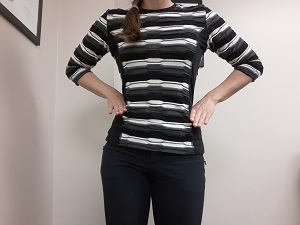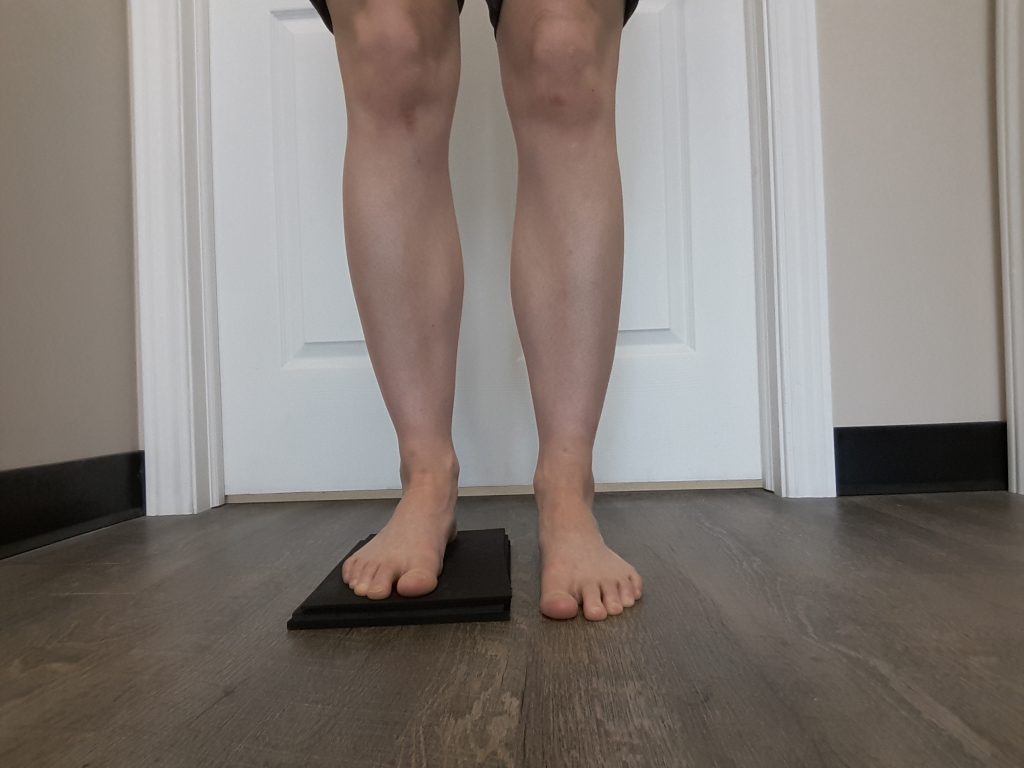
Leg Length Discrepancy
What is it?
A leg length discrepancy is when one leg is shorter than the other. This can be a structural or a functional difference, which are both treated differently. A structural difference occurs when one leg is physically shorter than the other, whereas a functional difference is when another factor is causing the one leg to appear shorter than the other.
Causes
To determine the difference between a structural and functional leg length discrepancy, talk to a professional such as a Pedorthist, Chiropractor, Physiotherapist, or your Doctor. If a structural difference is suspected, imaging may be done to determine the exact length. Imaging will be the most accurate way to determine the difference, but there is no perfect way to determine the exact leg length difference.

Structural
A structural leg length discrepancy occurs when one leg is actually shorter than the other, with no other factors influencing the difference. This is corrected with a lift on the shorter leg to even out the difference.
This difference may develop from birth or during childhood as a genetic factor. In this case, if the difference is not corrected for many years, the body may adapt to the difference. When the body adapts to the leg length discrepancy, a full correction may not be tolerated.
An injury may occur causing a leg length discrepancy. This could be a leg fracture during childhood, which can stunt growth of that leg. A major fracture to the leg later in life may also create a leg length discrepancy, especially if the fracture does not heal properly.
Surgery is another factor that can cause a structural leg length discrepancy. Most hip or knee surgeons correct any leg length discrepancies during the surgery, but if this is not the case, a structural difference may develop.

Functional
A functional difference occurs when another factor causes one leg to appear shorter than the other. This can develop from muscle or other alignment issues higher up in the hips, which would be addressed by a Chiropractor or Physiotherapist.
This difference may also develop from the mechanics of the feet. If one foot moves differently than the other, this can affect the alignment at the hips.
What will I feel and see?
When a leg length discrepancy occurs, the alignment throughout the body is changed. This creates stress on certain parts of the body, which all depends on how the body adapts.
Some people will notice that their pant legs are different length. One leg may be hemmed to a different length than the other one. You may notice your arms are different distances away from your body. If one shoulder is lower than the other, this may be indication of a leg length difference, but more commonly one shoulder will be naturally shorter and unrelated to the legs.
Hip and back pain may develop from the difference, especially if the discrepancy is a new phenomenon to the body. If it has been present from childhood, the body typically adapts in other ways to prevent the hip and back pain.
Scoliosis is a condition that may occur if the discrepancy has occurred for a long period of time (since childhood). This is when the spine curves from side to side. If the scoliosis has not been caused by the leg length discrepancy, it may actually create a leg length discrepancy.
If a functional difference is coming from the feet, you may see two very different feet. One arch may be significantly higher or lower than the other. One heel may be turned out or in significantly more than the other. Other functional differences may come from higher up and may be harder to see. In this case, it is best to consult with your Chiropractor, Physiotherapist or Doctor.
Pedorthic Treatments
Heel lifts
A heel lift will treat a structural leg length discrepancy to level out the legs. This can be done in a few different ways, depending on preference and the lift thickness:
A piece of material in the appropriate thickness can be added under or on top of the shoe insole. This is most appropriate with a small to medium thickness and when no other foot issues are present.
A lift can also be added to the bottom of custom foot orthotics or a generic insert. This is typically used for a small to medium thickness with those who require additional support.
A lift may also be added to the outside of the shoe, on the soles. This is typically used when the lift is too thick to use inside the shoe. When the heel is sliding out the back of the shoe, this is an indication that the lift is too thick to be placed inside the shoe. To add the lift of the outside of the shoe, your Pedorthist will remove the original sole, add the appropriate thickness and then reapply the same sole or add a new one. An inside and outside lift may be combined to equal the full thickness.
Orthotics
Orthotics are used to treat a functional difference caused from mechanics. They correct any differences that are present from the right versus left foot. If the foot mechanics are the sole cause of the functional discrepancy, the orthotics should correct the difference. With that being said, other structures should still be considered when a functional difference is present from the feet. If the feet have been causing the difference for many years, other structures higher up the chain typically adapt to the discrepancy. In this case, a Chiropractor or Physiotherapist is recommended to deal with the issues which are not immediately corrected through orthotics.
Other
To address the discrepancy caused from higher up alignment or muscle issues, a Chiropractor or Physiotherapist is recommended. If the feet are also contributing to the issue, multiple treatment avenues may be necessary.
If it sounds like the condition you have, or you would like more information, feel free to contact us!

You must be logged in to post a comment.